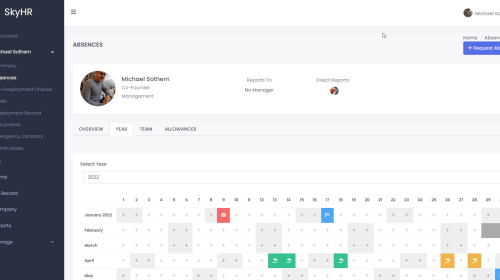HR Software Pricing
In the digital age, Human Resources (HR) software has become an indispensable tool for businesses of all sizes. Understanding the pricing of such software is crucial for making informed decisions. This article explores the various factors that influence HR software costs, helping you navigate the complexities of this vital investment.
Types of HR Software Solutions
When delving into the realm of HR software, it’s crucial to understand the different types of solutions available, as this will significantly influence both the functionality and pricing. Broadly, these solutions can be categorised into cloud-based versus on-premises systems, and comprehensive HR suites versus specialised tools.
Cloud-Based vs On-Premises HR Systems
Cloud-Based Systems:
- Accessibility and Flexibility: These systems are hosted on the provider’s servers and can be accessed over the internet. This means they are accessible from anywhere, which is particularly beneficial for remote or distributed teams.
- Cost-Effective Scaling: Cloud-based systems often operate on a subscription model, making them more scalable and cost-effective for businesses that are growing or have fluctuating needs.
- Maintenance and Updates: The service provider manages maintenance and updates, ensuring that the software is always up-to-date with the latest features and security protocols.
On-Premises Systems:
- Control and Customisation: On-premises solutions are installed and run on a company’s own servers. This offers greater control over the data and more opportunities for customisation.
- Upfront Investment: These systems typically require a significant upfront investment in hardware and software. They also demand in-house IT expertise for maintenance and updates.
- Security and Compliance: For businesses with stringent data security and compliance requirements, on-premises systems can offer a higher level of control over these aspects.
Comprehensive HR Suites vs Specialised Tools
Comprehensive HR Suites:
- All-in-One Solution: These suites provide a wide range of HR functionalities within a single platform, such as absence management, payroll management, benefits administration, recruitment, and performance management.
- Integration and Consistency: Having all HR processes integrated into one system promotes consistency in data management and can improve overall operational efficiency.
- Cost Implications: While comprehensive suites can be more expensive upfront, they potentially reduce the need for multiple standalone products.
Specialised Tools:
- Focused Functionality: Specialised tools are designed to address specific aspects of HR, such as applicant tracking systems, employee engagement tools, or learning management systems.
- Flexibility and Expertise: These tools often offer more advanced features and deeper functionality in their specific area, compared to the equivalent module in a comprehensive suite.
- Cost and Integration Considerations: While they may be more affordable on a per-tool basis, using multiple specialised tools can lead to challenges in data integration and overall management.
In summary, the choice between cloud-based versus on-premises systems and comprehensive HR suites versus specialised tools will largely depend on the specific needs, size, and budget of your business. Each option presents its own set of advantages, challenges, and cost implications, which should be carefully considered to ensure that the selected HR software solution aligns with your business objectives and growth plans.
Key Components Affecting HR Software Pricing
The cost of HR software is influenced by several key components. Understanding these elements can help businesses make informed decisions when selecting an HR software solution that fits their budget and requirements.
Core HR Management Features:
- Employee Records Management: The ability to efficiently manage employee data, including personal details, job roles, and salary information.
- Leave and Absence Tracking: Tools to monitor and manage the different types of leave, including sick leave, holidays, and other types of absences.
- Benefits Administration: Managing employee benefits such as insurance, pensions, and wellness programs.
- Pricing Variability: Generally, more comprehensive and user-friendly systems command higher prices.
Advanced Features: Analytics, AI, and Automation:
- Data Analytics and Reporting: Advanced reporting capabilities for better insights into workforce management and decision-making.
- Artificial Intelligence: AI-driven features like predictive analytics for turnover and performance management can significantly increase the cost.
- Automation: Tools to automate routine HR tasks, such as onboarding workflows or payroll processing, add to the cost but improve efficiency.
Customisation and Integration Capabilities:
- Tailored Solutions: Customisation to suit specific business processes or industry requirements can lead to higher costs.
- Integration with Existing Systems: The ability to seamlessly integrate with other business systems (like ERP or accounting software) can be a critical factor in pricing.
User Access and Scale: Pricing for Different Business Sizes:
- Per User Pricing Models: Many HR software solutions charge based on the number of users, which can escalate costs for larger organisations.
- Scalability: Solutions that offer scalability, allowing businesses to add or remove features or user licenses as needed, can impact the overall cost.
Compliance and Security Features:
- Regulatory Compliance: Features ensuring compliance with local and international labour laws and data protection regulations can affect pricing.
- Security Measures: Enhanced security features to protect sensitive employee data, including encryption and secure data storage, are often priced at a premium.
Support and Training Services:
- Customer Support: The level of customer support offered (e.g., 24/7 support, dedicated account manager) can influence the cost.
- Training: Onsite or online training sessions for staff to effectively use the software are sometimes billed additionally.
Implementation Complexity:
- Set-Up and Deployment: The complexity of setting up and deploying the software, especially for large and geographically dispersed organisations, can be a significant cost factor.
HR software pricing is multifaceted, with costs varying widely based on the breadth and depth of features, customisation and integration capabilities, scalability, and additional services such as support and training. Businesses must evaluate these components in the context of their specific HR needs and budget constraints to choose the most suitable and cost-effective HR software solution.
Choosing the Right HR Software for Your Budget
Selecting the right HR software involves balancing your specific business needs and budget constraints. It’s not just about finding the cheapest option but investing in a solution that offers the best value for your company’s specific requirements.
How to Get Low-Cost HR Software
Securing low-cost HR software that meets your business needs without compromising on quality requires a strategic approach. Here are key strategies to consider:
Assess Your Specific Needs:
- Identify Core Features: Determine the essential features you need. Avoid paying for advanced functionalities that your business may not use.
- Size Matters: Smaller businesses often require less complex systems. Look for HR Software for small businesses or small to medium-sized enterprises (SMEs).
Research and Compare Options:
- Explore a Variety of Vendors: Investigate different HR software providers. Comparing their offerings can help you find a cost-effective solution.
- Read Reviews and Seek Recommendations: Utilise online forums, social media groups, and professional networks to gather insights from other users.
Consider Open-Source Software:
- Lower Initial Costs: Open-source HR software can be significantly cheaper than proprietary solutions. However, consider potential costs for customisation and support.
- Community Support: These platforms often have active user communities offering free support and resources.
Opt for Cloud-Based Solutions:
- Reduced Hardware Costs: Cloud-based HR software typically requires no additional hardware investment, reducing upfront costs.
- Subscription Models: Many cloud-based systems use a subscription model, which can be more affordable and flexible, especially for smaller businesses.
Negotiate with Vendors:
- Ask for Discounts: Don’t hesitate to negotiate pricing, especially if you are committing to a long-term contract.
- Bundle Services: You might get a better deal by bundling HR software with other services the vendor offers.
Take Advantage of Free Trials and Demos:
- Try Before You Buy: Many vendors offer free trials. Use these to assess if the software fits your needs before making a financial commitment.
- Evaluate User-Friendliness: Ensure that the software is easy to use to avoid additional training costs.
Utilise Basic Plans with Scalability Options:
- Start Small: Choose a basic plan and scale up as your business grows. This approach helps in managing costs more effectively.
- Check for Scalability: Ensure the software can grow with your business to avoid future costly upgrades or system changes.
Minimise Customisation:
- Standard Features: Use standard features as much as possible. Customisation can significantly increase costs.
- Evaluate Necessity: Only opt for customisation if it’s crucial for your business processes.
Stay Informed About New Market Entrants:
- Emerging Vendors: New players in the market often offer competitive pricing to attract customers. Keep an eye on emerging HR software vendors.
By carefully considering these strategies, businesses can secure HR software solutions that are not only cost-effective but also adequately meet their operational needs.
Experience the Future of HR Management with SkyHR’s Free Trial
Are you seeking a cost-effective, efficient, and user-friendly HR software solution? Look no further than SkyHR. We understand the unique challenges faced by modern businesses, and our platform is designed to streamline your HR processes, saving time and money.
Why wait to transform your HR operations?
Sign up for SkyHR’s no-obligation, free trial today and discover first-hand how our cutting-edge features can elevate your HR management. With SkyHR, experience the ease of managing employee records, tracking leave, processing payroll, and much more, all within a secure, cloud-based environment.
Take the first step towards a smarter HR solution.
Try SkyHR for free and witness the impact of an optimised HR system on your business efficiency and employee satisfaction.
Conclusion: Balancing Cost and Quality in HR Software
In conclusion, while the cost is a critical factor in selecting HR software, it should not be the sole consideration. Balancing cost with quality and ensuring the software meets your business needs is paramount. Wise investment in HR technology can lead to improved efficiency, compliance, and employee satisfaction, ultimately contributing to the overall success of your business.




